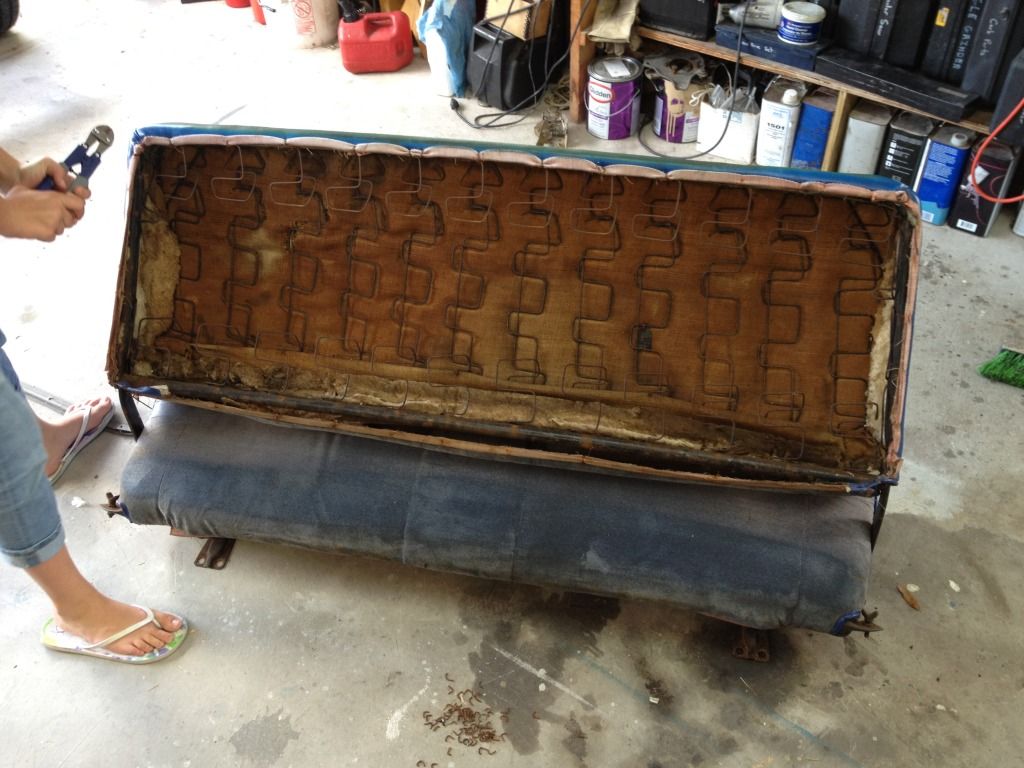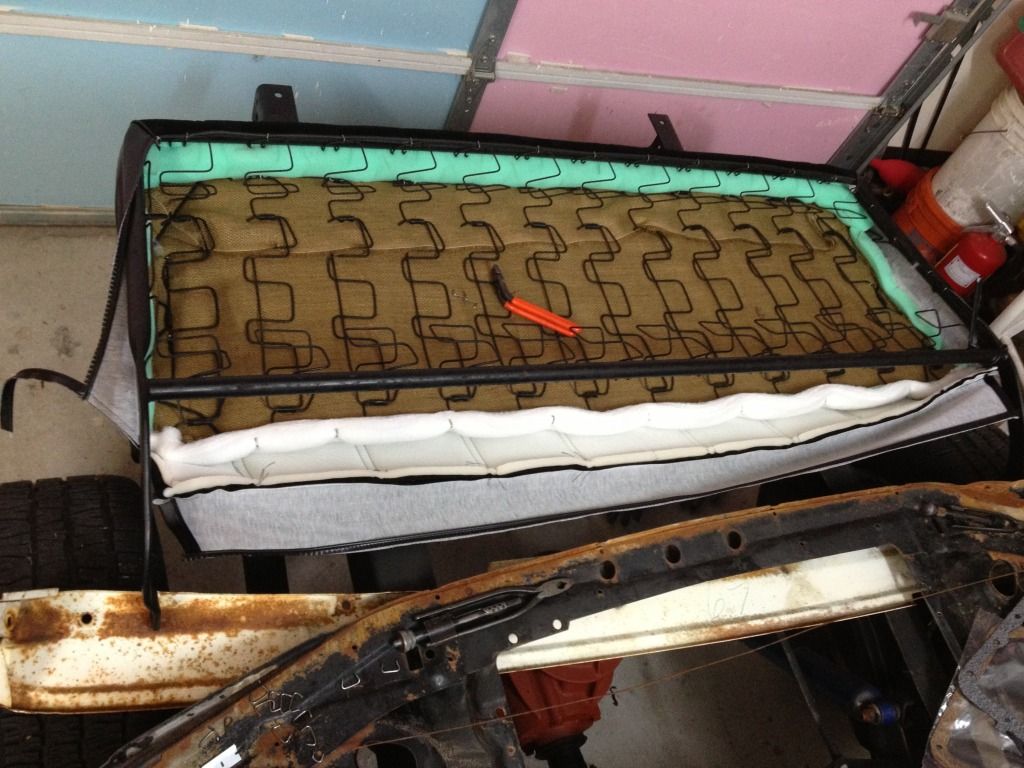- Joined
- Sep 2, 2012
- Messages
- 1,622
- Reaction score
- 221
- Location
- Blue Springs, MO
- My Car
- 1971 Mach 1, Grabber Blue w/Argent stripes. Original 2V 351C Auto, Tilt, rear defog, Black Comfortweave Interior. Under restoration. Original colors, 4V 351C, 4-Speed, Spoilers, Magnums, Ram Air. All Ford parts.
Once again I am trying to progress on the worst run project of my life. I have 2 new areas I need help.
1) Hog Rings- With the price of upholstery repair I want to tackle the seat covers and foam on my own. Any advice? I have never even tried this before, but I am an engineer who thinks that I can do anything within reason. So my question is regarding hog rings. I notice there are 45 degree pliers and straight pliers. Will the 45's be sufficient to do a Mach 1 interior? Additionally, I did see the post about using zip ties in place of hog rings. Is that a smarter way to go? Save the $35 in hog ring pliers, plus the hog ring purchase, and have nice adjustable tension zip ties?
2) Different area of the car, the valve train. I have a Ford Motorsport cam, Ford Lifters, Stamped Rockers, Boss 351/Non-adjustable) heads, Ford Guide plates, and poly locks, but no pushrods yet. I have read all the techniques on using an adjustable pushrod to determine the correct length for my rods. I want to know the easiest way to do this correctly. What length rods should I need? 8.5, 8.75, 7.5. I need to know so I can order the correct length pushrod measurement tool. Is there any place I can go to rent or borrow that tool since I do not plan to use it again? (I bought the engine parts as a set, unassembled, years ago, so it has never been completed or run as a complete engine.)
Any wisdom is greatly appreciated!
kcmash
1) Hog Rings- With the price of upholstery repair I want to tackle the seat covers and foam on my own. Any advice? I have never even tried this before, but I am an engineer who thinks that I can do anything within reason. So my question is regarding hog rings. I notice there are 45 degree pliers and straight pliers. Will the 45's be sufficient to do a Mach 1 interior? Additionally, I did see the post about using zip ties in place of hog rings. Is that a smarter way to go? Save the $35 in hog ring pliers, plus the hog ring purchase, and have nice adjustable tension zip ties?
2) Different area of the car, the valve train. I have a Ford Motorsport cam, Ford Lifters, Stamped Rockers, Boss 351/Non-adjustable) heads, Ford Guide plates, and poly locks, but no pushrods yet. I have read all the techniques on using an adjustable pushrod to determine the correct length for my rods. I want to know the easiest way to do this correctly. What length rods should I need? 8.5, 8.75, 7.5. I need to know so I can order the correct length pushrod measurement tool. Is there any place I can go to rent or borrow that tool since I do not plan to use it again? (I bought the engine parts as a set, unassembled, years ago, so it has never been completed or run as a complete engine.)
Any wisdom is greatly appreciated!
kcmash















